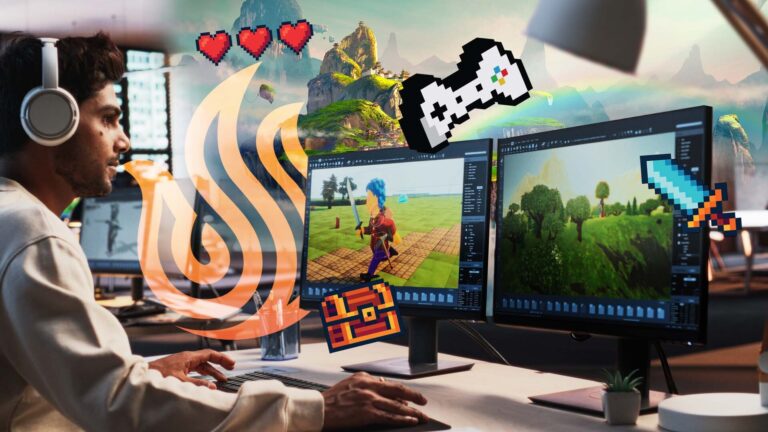3D animation projects are incredibly varied in scope, design, tone, and structure. However, there is one thing all animation projects have in common. Each production consists of hundreds of 3D models that must all be carefully crafted by talented artists. The artists dedicated to making digital representations of objects and characters are known as 3D modelers. If you wish to be a part of the modern animation or digital entertainment world, then becoming a 3D modeler may be the perfect career path for you.
Are 3D Modelers in Demand?
Before you can determine if a career path is a suitable pursuit, it is wise to analyze the demand and market for the profession. Luckily, 3D modelers enjoy incredibly high demand for their talents. Not only does it take dedication to develop the skills necessary to create at a professional level, but there are some main pillars of entertainment that are responsible for the explosion of 3D modeling demand. Having a difficult to attain skill will always make you valuable in the job market. Having popular culture on your side is another major plus. Overall, the outlook for aspiring 3D modelers is phenomenal.
Video Games
Each year, video games generate more revenue than all other entertainment mediums combined. While some of these titles use 2D art styles as a visual framework, a bulk of titles released in the modern era are fully 3D. Modern audiences also expect vivid detail in each of the digital worlds they explore. The number of 3D models and other assets required to make a contemporary game release is exponentially higher than it was a decade ago.
Not only are there more 3D game titles being developed than ever before, but each development studio needs to hire extra artists just to create the models on time. This combination bodes extremely well for aspiring 3D modelers. Should you pursue this career path, there will be a role for you in the video game sector.
Film
Animated films have also become increasingly popular over the years. There are far less restrictions than with live action, so many creative directors prefer the freedom of 3D animation for their films. Much like with video games, modern movies require dozens, if not hundreds, of animators and 3D modelers to design each asset in an efficient manner. If working in film is your goal, all you need to do is develop the skills to create at a professional level. Talented modelers will always find spots within the film industry.
Animation
There are many other animation productions to consider as well. From short webtoons to ongoing streaming shows, there are many opportunities for 3D animators to make a living in the realm of digital entertainment. These can serve as steppingstones to the video game and movies you wish to work on, or these can be a nice reprieve after a massive development cycle that lasted multiple years. The flexibility you have as a 3D modeler makes your career outlook even sweeter.
What Does a 3D Modeler Do?
3D modelers work on a variety of tasks based upon their skill level and role on the development team. Although you may have just a singular role on any given project, becoming proficient in all the core skills a 3D modeler needs is a must. Not only will you have to switch roles on the fly from time to time, but you will want as many opportunities as possible when looking for your next assignment. Here are some of the main responsibilities to take note of.
Basic 3D Modeling
As the name implies, you will create 3D models throughout your daily activities. Learning how to craft both inanimate objects and characters is crucial to building a successful career. Organic and synthetic materials each require a unique approach. As you study 3D design, you will discover the various elements that differentiate both processes. When creating 3D models, it is impossible not to consider additional details such as textures and lighting. Keeping these aspects in mind while establishing the form of each object or character is the best way to ensure all your work will be useful in the final version.
Adding Details
Creating the initial 3D model is similar to designing an outline of an image. With the basic dimensions set, you must now add details to flesh out each asset. Adding textures and color to each model is an effective way to start. Color and lighting go hand in hand, so expect to work on both at the same time. In order to simulate specific materials, color maps are overlayed on digital surfaces to produce the desired effect. You can create fur, brick, wood, and any other texture you can think of within a game or animation engine.
Animation and Character Rigging
Although each project has dedicated animators, you will likely have to chip in after your modeling work is complete. Having the ability to create simple and smooth motions is a must. Knowing how to rig your characters is a huge bonus. Understanding how your models will be animated allows you to design assets in a way that makes adding motion far simpler.
Basic animation involves replicating the key principles such as squash and stretch or timing. These core principles have guided animators for centuries. As for character rigging, this involves more research and careful consideration. Rigging characters includes simulating entire bone and muscular systems underneath what the audience sees. It takes an extremely complex mechanism to authentically replicate organic bodies. Having a basic understanding of how this works will greatly enhance your career prospects.
Lighting and Other Environmental Polish
The second half of production is comprised mostly of adding polish and ensuring everything looks as appealing as possible. Everyone will be required to make scenes look prettier, including the modeling team. Since you can model characters and objects, you are often tasked with adding environmental details as well. Tress, bushes, and other foliage are logical places to start. You may even add small animals or other creatures to bring a scene to life.
Rendering Objects Into a Scene
Throughout development, you will constantly be iterating and improving each individual part of any given scene. However, there comes a point in which your contributions must be finalized. To complete a scene, each object, character, and element must be rendered into the finished product. Rendering is a relatively automated process that the game engine or software takes care of on your behalf. Your job is to make sure everything is set up exactly right before you start to render. Rendering can take many hours to complete, so ensuring everything is close to perfect is the real challenge.
How Do You Become a 3D Modeler?
To become a 3D modeler, you must acquire knowledge and skills that are not common throughout the world. While this helps your career prospects once you have the prerequisite skills, obtaining them in the first place can prove tricky if you do not know where to look. You may be tempted to check online for video tutorials and other resources. While this works great for most smaller things in life, pursuing a career you are passionate about requires deeper consideration.
The information obtained from online resources may be outdated or incorrect. The quality of each source varies dramatically. Online videos and other sites should only be used for simple reference of specific issues. For the highest chance of a successful career, you will want a great education from a creative arts college. The way to ensure this is to attend a formal education program for modeling or animation.
Creative arts colleges offer several degree programs that 3D modelers would find enjoyable. You can enroll in a general 3D modeling and animation program that provides a well-rounded curriculum. This curriculum will prepare you for most digital entertainment roles. If you have a specific passion in mind, such as video games, you could go for a more specialized degree program. In each case, you will learn about each step used to create digital entertainment across all mediums.
The Benefits of Attending a Formal Education
In addition to the skills and knowledge you must obtain, creating digital worlds requires many other resources. There are also the tools and people you need to consider. Enrolling in a digital arts and animation degree program will prepare you for a career in 3D modeling.
Gaining access to the advanced hardware and software needed to make professional grade
digital art may be out of reach. Massive computers and subscriptions that are priced with large businesses in mind will prohibit most people from working out of their garage. By attending a creative arts college, you automatically get to use the same tools as professionals for each class assignment. Gaining familiarity with these tools will make landing a job much easier.
As you work through each class, you will work on team projects and meet other aspiring artists. A college is a fantastic way to start building a network of soon to be industry professionals. Having connections throughout the digital entertainment world will make it easier to find more work when you need it.
Your classmates are not the only network you can take advantage of. Upon graduating, you can utilize career services to increase your credibility and land your first industry job. The University of Silicon Valley has a vast number of connections to recruiters across Silicon Valley. By telling us what you are interested in, we can match you with relevant jobs that fit your level of experience. It is the ideal way to kickstart a long and successful career as a 3D modeler and digital entertainer.
Want to Learn More?
Ready to improve your drawing skills and take your digital art skills to next level as a 3D modeler? University of Silicon Valley’s 3D Modeling Focus Area has been designed to ensure Digital Arts & Animation degree program students get the most relevant training and access to modern industry tools taught by subject matter experts. You’ll learn professional workflows and create your own 3D models for films, video games and more.
University of Silicon Valley is uniquely poised to offer a meaningful and valuable education for 21st century students. We believe in an education that directly correlates with the work you’ll be doing after you graduate. Interested in learning more? Contact Us today.


